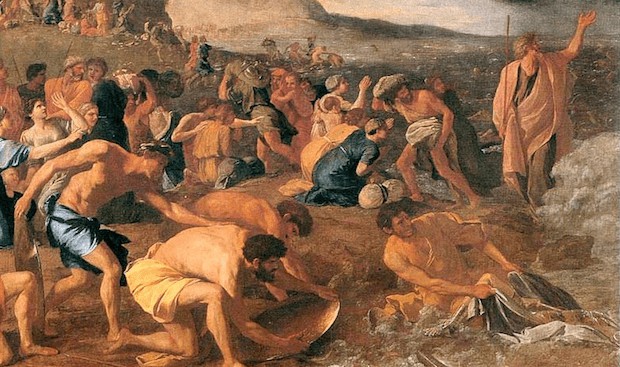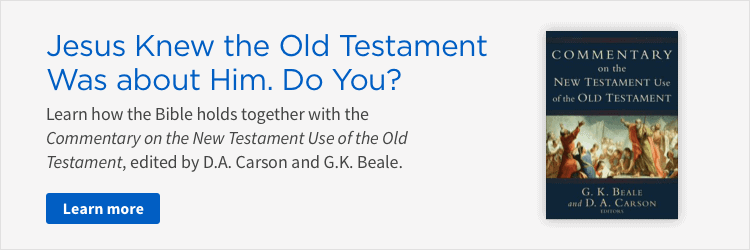This post is excerpted from The Bible Unfiltered by Dr. Michael S. Heiser.
Israel’s crossing of the Red Sea in Exodus 14 has been spectacularly depicted several times for television and movies. But anyone who retraces the steps of Moses and the Israelites to discover where the crossing occurred finds a significant problem: The “Red Sea” in Israel’s itinerary most likely wasn’t what we think of as the Red Sea.
The problem originates with the biblical Hebrew phrase yam suph, usually rendered as “Red Sea” in English translations. The phrase actually means “sea of reeds” or “reed sea.” The word yam refers to a body of water which, of course, could include something as large as a sea. However, suph does not mean “red”; that word in Hebrew is ʾadom (used in Gen 25:30) or ʾadmoni (used in Gen 25:25).
So the Israelites crossed “the sea of reeds,” which refers to a body of water with reeds in it, most likely papyrus reeds. That description could not apply to the Red Sea since very few parts of the Red Sea are suitable for reeds to grow due to the salt content of the water. The phrase yam suph further complicates the identification of the crossing, since it is used in the Bible for watery locations in or near both prongs of the Red Sea. Some verses describe the eastern prong, the Gulf of Aqabah (1 Kgs 9:26; Exod 23:31; Num 21:4; Judg 11:16), but Num 33:8–10 describes the yam suph as being geographically oriented to the western prong of the Red Sea, the Gulf of Suez, a few days’ journey from Egypt. This passage also has the Israelites passing “through the midst of the sea (yam)” before they ever get to the yam suph (“Red Sea”):
And they set out from before Hahiroth and passed through the midst of the sea [yam] into the wilderness, and they went a three days’ journey in the wilderness of Etham and camped at Marah. And they set out from Marah and came to Elim; at Elim there were twelve springs of water and seventy palm trees, and they camped there. And they set out from Elim and camped by the Red Sea (yam suph).
It’s possible that when the Israelites emerged from Egypt that they crossed a smaller body of water adjacent to the Red Sea—possibly one of the Bitter Lakes or Lake Timsah—rather than the Red Sea itself. But there’s another option.
Since biblical Hebrew words were originally written without vowels, the phrase yam suph could be read as yam soph. The odd-sounding result would be “the sea of the end” or “the sea of extinction”—a phrase that refers to an ancient cosmological notion that the world was flat and surrounded by a water boundary. In this view, the Israelites would have thought they were approaching the end of the world, venturing out into the desert wilderness and straight into the primeval waters where no one could live.
This view is mythic in tone, but it does not preclude a miraculous historical event. Israelites who believed they were headed to the edge of the world—into the chaotic sea where none could survive—would have interpreted God’s deliverance as an astonishing act of divine power. To land safely on the other side of death’s realm would be miraculous.
Although we can’t determine the precise location of the crossing, the various possibilities in no way rule out God’s providential intervention on behalf of his people.
***

Dr. Michael S. Heiser is the author of The Unseen Realm: Recovering the Supernatural Worldview of the Bible and Angels: What the Bible Really Says about God’s Heavenly Host.
His newest book, The World Turned Upside Down: Finding the Gospel in Stranger Things, is now on pre-order.
He’s taught many Mobile Ed courses, including Problems in Biblical Interpretation: Difficult Passages I.






